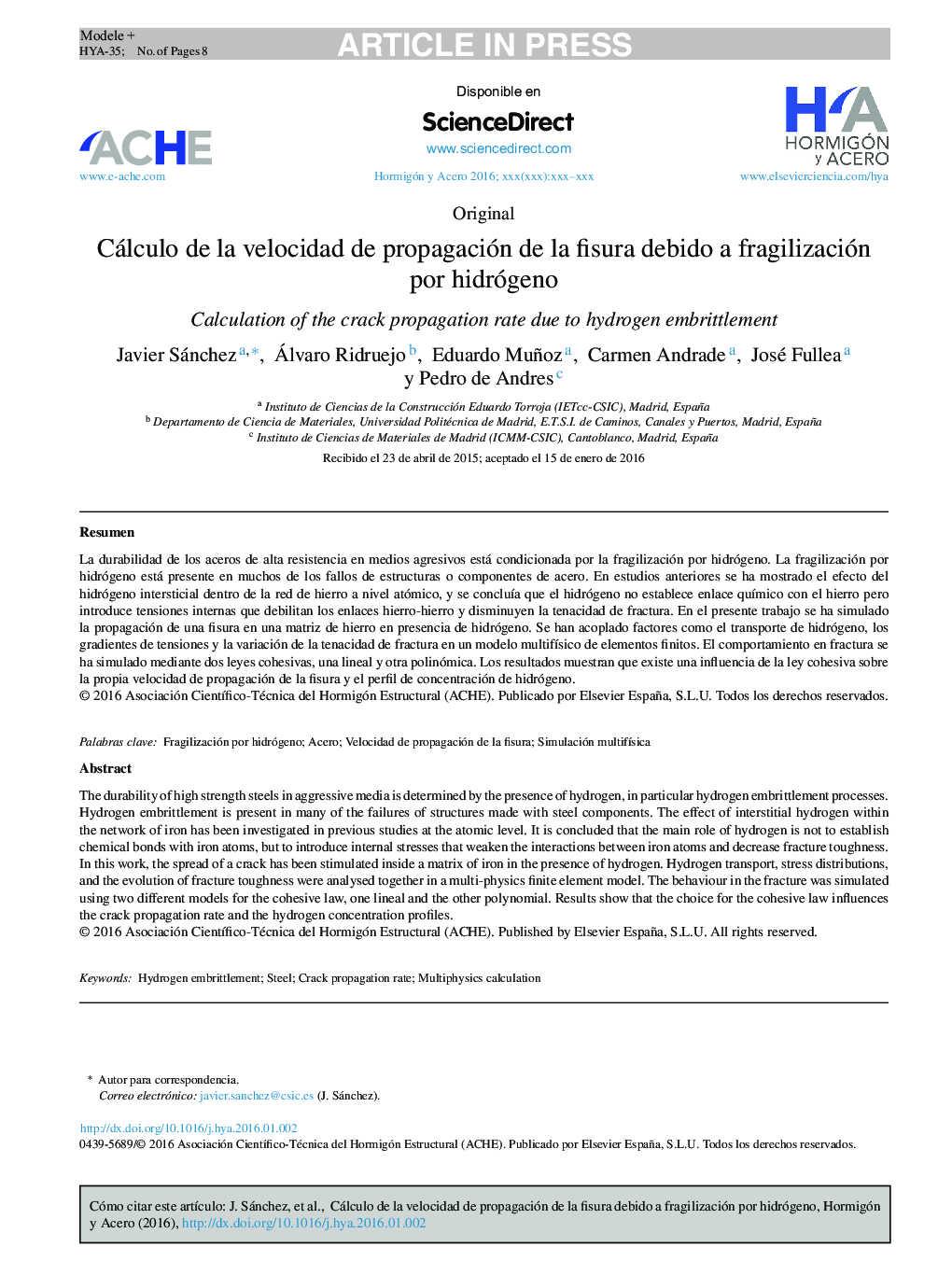| Article ID | Journal | Published Year | Pages | File Type |
|---|---|---|---|---|
| 6747412 | Hormign y Acero | 2016 | 8 Pages |
Abstract
The durability of high strength steels in aggressive media is determined by the presence of hydrogen, in particular hydrogen embrittlement processes. Hydrogen embrittlement is present in many of the failures of structures made with steel components. The effect of interstitial hydrogen within the network of iron has been investigated in previous studies at the atomic level. It is concluded that the main role of hydrogen is not to establish chemical bonds with iron atoms, but to introduce internal stresses that weaken the interactions between iron atoms and decrease fracture toughness. In this work, the spread of a crack has been stimulated inside a matrix of iron in the presence of hydrogen. Hydrogen transport, stress distributions, and the evolution of fracture toughness were analysed together in a multi-physics finite element model. The behaviour in the fracture was simulated using two different models for the cohesive law, one lineal and the other polynomial. Results show that the choice for the cohesive law influences the crack propagation rate and the hydrogen concentration profiles.
Related Topics
Physical Sciences and Engineering
Engineering
Civil and Structural Engineering
Authors
Javier Sánchez, Álvaro Ridruejo, Eduardo Muñoz, Carmen Andrade, José Fullea, Pedro de Andres,
